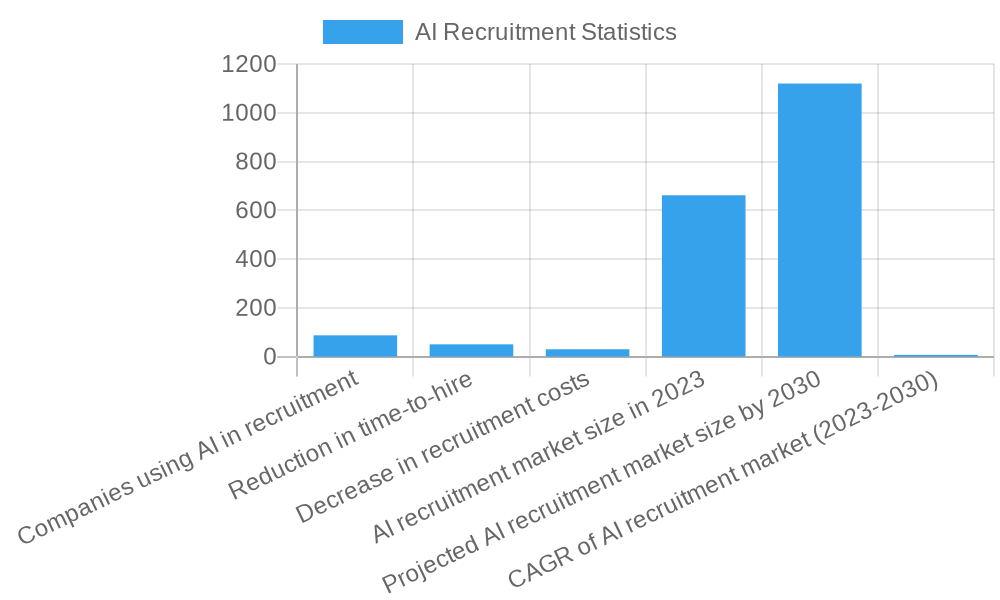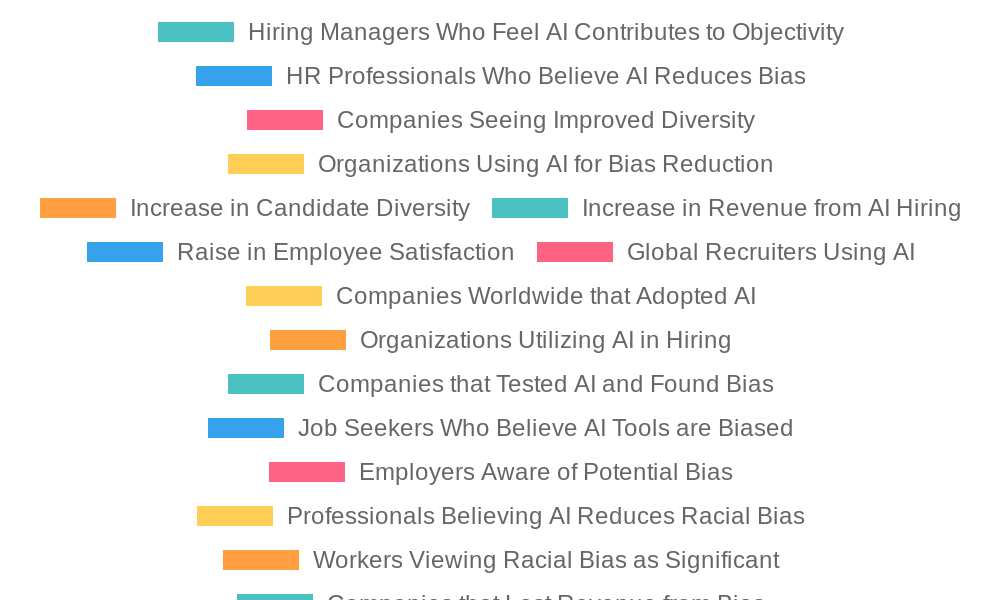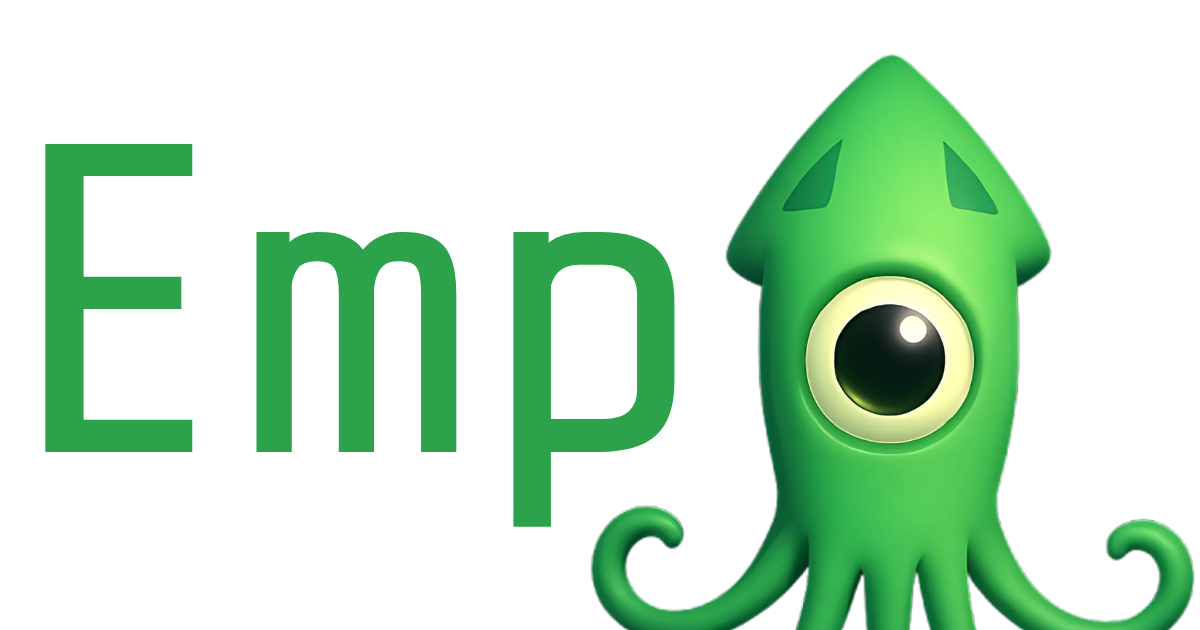In the rapidly evolving landscape of the tech industry, artificial intelligence is reshaping the hiring process in ways that were previously unimaginable. AI-enabled interviews are not just a trend; they’re becoming a standard practice that reflects the future of job recruitment. This transformation is exemplified by Meta’s recent decision to incorporate AI tools into coding tests for job candidates, allowing applicants to utilize AI assistance as part of their evaluation. Such a policy acknowledges the reality of modern engineering roles, where AI tools play a pivotal role in enhancing productivity and creativity. With Mark Zuckerberg at the helm, the conversation around AI’s role in hiring has gained momentum, prompting a reevaluation of traditional interview methods. As more companies adopt similar policies, the question arises: how will AI continue to alter the fabric of job interviews, and what implications will this have for both candidates and employers? The answer could redefine the criteria for hiring, ushering in an era where AI not only supports candidates but also elevates the standard for what it means to be qualified for a role.
In the rapidly evolving landscape of the tech industry, artificial intelligence is reshaping the hiring process in ways that were previously unimaginable. AI-enabled interviews are not just a trend; they’re becoming a standard practice that reflects the future of job recruitment. This transformation is exemplified by Meta’s recent decision to incorporate AI tools into coding tests for job candidates, allowing applicants to utilize AI assistance as part of their evaluation. Such a policy acknowledges the reality of modern engineering roles, where AI tools play a pivotal role in enhancing productivity and creativity. With Mark Zuckerberg at the helm, the conversation around AI’s role in hiring has gained momentum, prompting a reevaluation of traditional interview methods. As more companies adopt similar policies, the question arises: how will AI continue to alter the fabric of job interviews, and what implications will this have for both candidates and employers? The answer could redefine the criteria for hiring, ushering in an era where AI not only supports candidates but also elevates the standard for what it means to be qualified for a role.
Implications of AI in Hiring
As artificial intelligence reshapes various industries, its impact on hiring practices becomes increasingly important to consider. AI-enabled interviews offer opportunities for efficiency but also bring challenges related to fairness, accessibility, and potential biases.
Fairness and Bias in AI-Driven Hiring
AI systems can enhance recruitment efficiency. However, they can also reinforce past biases found in historical data. For example, Amazon had to abandon its AI recruitment tool after discovering it favored male candidates because it was trained on resumes from primarily male applicants. This incident highlights the need for companies to understand that AI inherits biases present in the data.
Issues such as racial and gender bias in technologies like facial recognition are well-documented. Reports indicate that error rates are much higher for individuals with darker skin compared to those with lighter skin. Such disparities emphasize the necessity for companies to thoroughly evaluate their AI recruitment tools to foster fairness in hiring.
Accessibility Concerns
While AI can streamline hiring, it may disadvantage certain groups, especially individuals with disabilities. A lawsuit against Workday illustrated this point; the plaintiff alleged that the AI-powered screening software discriminated against him. This case underscores the importance of designing AI tools inclusively to prevent further marginalization of vulnerable populations.
Meta’s Commitment to AI
Meta’s investment in AI emphasizes its goal to transform the hiring landscape. CEO Mark Zuckerberg stated, “We’re focused on using AI to help engineers with their day-to-day work. In the future, creativity will flourish as individuals are freed up to explore innovative ideas.” This vision showcases Meta’s intention to integrate AI throughout its operations, including recruitment, to create a more innovative workforce.
Strategies for Promoting Fairness
To address AI-driven biases, organizations can adopt several strategies:
- Regular Audits: Regularly reviewing AI systems helps identify and correct biases, ensuring fair hiring practices.
- Human Oversight: Keeping humans involved in the hiring process offers essential context to make ethical decisions that AI cannot.
- Transparent Algorithms: Developing transparent AI systems allows organizations to spot and adjust for biases effectively.
To sum up, while AI holds promise for enhancing hiring practices, organizations must implement these tools thoughtfully. Ensuring fairness and accessibility is crucial to creating an equitable and diverse workforce, rather than amplifying existing biases.

| Company | Tools Used | Expected Outcomes | Commitment to Fairness |
|---|---|---|---|
| Meta | AI coding assistants, AI interview tools | Enhanced productivity, creativity in coding tests | Focus on reducing bias in AI tools; continuous audits planned. |
| OpenAI | AI-driven assessments | More accurate applicant evaluations | Commitment to transparent AI systems and bias mitigation measures. |
| Anthropic | AI-assisted hiring platforms | Improved hiring efficiency | Incorporates ethical considerations in AI algorithms. |
Fairness and Bias in AI-Driven Hiring
The integration of artificial intelligence into hiring practices has revolutionized the recruitment landscape, promising efficiency and objectivity. However, this innovation also brings to the forefront significant challenges related to fairness and bias. AI systems learn from historical data, which can contain biases that reflect historical inequalities, leading to skewed candidate assessments.
One of the most prominent examples highlighting these dangers is Amazon’s AI recruitment tool, which the company abandoned after discovering it favored male candidates. The tool was trained on resumes submitted to the company over a ten-year period, a dataset that predominantly included male applicants, thus perpetuating existing gender imbalances in hiring.
Moreover, research indicates that AI-driven hiring processes can inadvertently exacerbate racial and gender disparities. For instance, studies show that facial recognition technologies have a higher misclassification rate for individuals with darker skin tones compared to those with lighter skin, further compounding systemic biases.
According to a 2020 report by the National Bureau of Economic Research, AI can offer significant advantages in hiring speed and cost-effectiveness, yet if unexamined, these AI tools may inadvertently reinforce and amplify existing inequalities within the workforce.
The necessity for a critical assessment of AI tools cannot be overstated. Companies must adopt strategies to ensure fairness and mitigate bias, such as implementing regular audits of AI systems, ensuring ongoing human oversight in the hiring process, and fostering transparency in algorithmic decision-making.
In conclusion, while AI has the potential to streamline hiring processes, organizations must approach its implementation with caution, ensuring that they create equitable hiring environments. The focus should not only be on enhancing efficiency but also on addressing the inherent biases that can arise from relying heavily on AI-driven systems, ultimately leading to a more diverse and inclusive workforce.

Accessibility Concerns in AI Hiring Processes
As artificial intelligence continues to play a pivotal role in hiring processes, accessibility concerns, particularly for individuals with disabilities, must be critically evaluated. The integration of AI in recruitment presents both promises and challenges, with significant implications for equitable hiring.
Case Study: The Workday Lawsuit
One key case that underscores these concerns is the class action lawsuit against Workday, filed in 2024 by Derek Mobley. Mobley alleged that Workday’s AI-driven applicant screening software discriminated against him based on race, age, and disability. He reported being rejected from over 100 job applications due to embedded biases in the AI algorithms. This lawsuit highlights how AI tools can perpetuate existing injustices, raising questions about the fairness and inclusivity of AI in hiring. The EEOC (U.S. Equal Employment Opportunity Commission) supported Mobley’s case, emphasizing that employers must ensure their screening software does not disproportionately disadvantage specific groups, particularly those protected under anti-discrimination laws. More information can be found in articles on Reuters and Munck Wilson Mandala.
Importance of Inclusive Design
In light of such incidents, the need for inclusive design in AI technologies is more pressing than ever. The code and algorithms that power AI must be carefully assessed to avoid inadvertently reinforcing systemic barriers faced by individuals with disabilities. An important study titled “Tackling Algorithmic Disability Discrimination in the Hiring Process” advocates for a multidisciplinary approach to developing these technologies, ensuring that they are accessible to all. Accessible AI design must consider diverse user needs, enabling equitable opportunities in the workforce. You can refer to the detailed analysis presented in studies accessible at arXiv.
Implications for Employers and AI Vendors
The implications of the Workday lawsuit extend to both employers and AI vendors. Organizations must take proactive measures to audit their AI hiring tools regularly, addressing potential biases and ensuring transparent practices in algorithmic decision-making. This vigilance not only safeguards against discrimination but also fosters a more inclusive hiring process that reflects the diversity of the workforce.
In summary, as organizations increasingly rely on AI for hiring, addressing accessibility concerns associated with these technologies is crucial. Implementing inclusive design principles and ensuring equitable outcomes are necessary steps to create an inclusive and fair hiring environment. This responsiveness not only protects vulnerable populations but also enriches the workplace with diverse talent.
User Adoption of AI in Hiring
The adoption of artificial intelligence (AI) in recruitment has seen significant growth across various sectors, with organizations leveraging AI to enhance efficiency, reduce costs, and improve hiring outcomes.
Key Statistics
- Widespread Adoption: Approximately 87% of companies have integrated AI into their recruitment processes. [demandsage.com]
- Efficiency Gains: AI has been instrumental in reducing time-to-hire by up to 50%, with 75% of recruiters acknowledging that AI tools expedite resume screening. [wifitalents.com]
- Cost Reduction: Organizations employing AI in hiring have reported a decrease in recruitment costs by up to 30% per hire. [demandsage.com]
- Market Growth: The AI recruitment industry was valued at $661.6 million in 2023 and is projected to reach $1.12 billion by 2030, growing at a compound annual growth rate (CAGR) of 6.8%. [aitechtonic.com]
Case Studies
- ServiceNow’s Cost Savings: In 2025, ServiceNow announced it would save $100 million by reducing planned hires due to its internal use of AI technologies, showcasing AI’s role in operational efficiency. [axios.com]
- Capita’s AI-Powered Recruitment: British outsourcing firm Capita plans to implement an AI-driven recruitment system developed with Salesforce, aiming to reduce recruitment time from several weeks to mere hours by automating over 200 tasks. [reuters.com]
Diversity and Bias Reduction
- Enhanced Objectivity: 51% of hiring managers believe AI contributes to a more objective recruitment process, while 55% of HR professionals assert that it helps reduce unconscious bias. [wifitalents.com]
- Improved Diversity: 68% of companies reported increased diversity in hiring after implementing AI, with AI-driven candidate sourcing boosting diversity hiring by 33%. [wifitalents.com]
Challenges and Considerations
- Candidate Hesitation: Despite the benefits, 66% of U.S. adults express reluctance to apply for jobs where AI is used in the screening process due to concerns about the dehumanization of hiring. [demandsage.com]
- Skill Shortages: The demand for AI-skilled professionals has led to increased salary expectations, with AI-related costs projected to surge by 36% in 2025, prompting companies like Meta and Google to offer substantial signing bonuses. [itpro.com]
In summary, AI’s integration into recruitment is transforming hiring practices by enhancing efficiency, reducing costs, and promoting diversity. However, organizations must navigate challenges such as candidate apprehension and the competitive market for AI talent to fully realize these benefits.
Adoption of AI in Hiring

Chart: Adoption of AI in Hiring Practices
This graph illustrates the significant statistics regarding the adoption of AI in hiring practices, highlighting that approximately 87% of companies incorporate AI tools to boost efficiency and tackle recruitment challenges.
Impact of AI on Diversity and Bias Reduction in Hiring

Chart: Impact of AI on Diversity and Bias Reduction in Hiring Practices
This doughnut chart reflects how AI is perceived to influence diversity and reduce bias in hiring across various organizations, showing significant percentages of hiring managers and HR professionals recognizing AI’s role in promoting inclusivity and objectivity in recruitment.
Mitigating Bias and Promoting Fairness
In an era where artificial intelligence increasingly influences hiring processes, organizations must proactively address potential biases to foster a fair and inclusive workforce. Several strategies can be employed to mitigate AI-driven biases, which are essential not only for legal compliance but also for cultivating a diverse employee base.
- Regular Audits: Organizations should conduct routine audits of their AI systems to detect biases and inefficiencies. Regular assessments allow companies to identify patterns that may indicate unfair treatment of specific demographic groups and make necessary adjustments. These audits should focus on algorithms, data inputs, and decision-making processes to ensure equitable treatment in recruitment.
- Human Oversight: Maintaining human oversight in the hiring process is crucial to counteract biases that AI may overlook. Humans can provide the context and ethical considerations that machines lack, helping to make more nuanced hiring decisions. By combining AI efficiency with human judgment, organizations can improve the fairness of their recruitment processes.
- Transparent Algorithms: Striving for transparency in how algorithms function is vital for identifying potential biases. Organizations should aim to understand and disclose the criteria that their AI systems use to evaluate candidates. When algorithmic decisions can be easily understood and scrutinized, it is easier to foster trust and accountability among applicants and stakeholders.
- Diverse Training Data: To avoid perpetuating existing biases, it is essential to use diverse and representative datasets for training AI systems. By ensuring that algorithms learn from varied examples across different backgrounds, organizations can reduce the risk of biased outcomes in recruitment.
- Inclusive Design Principles: AI tools should be designed with the needs of a diverse user base in mind. Incorporating inclusive design principles will help ensure that hiring practices do not inadvertently disadvantage certain groups, promoting equal opportunities for all applicants.
In conclusion, by implementing these strategies—regular audits, maintaining human oversight, promoting transparency, utilizing diverse data, and following inclusive design principles—organizations can significantly mitigate AI-driven biases. These practices not only ensure compliance with fairness regulations but also contribute to creating a diverse and inclusive workforce that reflects a broad spectrum of perspectives and experiences. Such diversity ultimately leads to enhanced creativity, innovation, and productivity within organizations.

Conclusion
In conclusion, the integration of artificial intelligence into hiring processes presents a transformative opportunity for organizations, enhancing efficiency and potentially improving outcomes. However, it is imperative for companies to implement these technologies thoughtfully, ensuring that fairness and inclusivity remain at the forefront of their recruitment strategies. As we navigate this evolving landscape, organizations must address the inherent challenges posed by AI, such as bias and accessibility issues, which could undermine the very advancements they seek to achieve.
Reflecting on the implications of AI in hiring, we must ask ourselves: How do we ensure that AI tools empower rather than hinder equitable opportunities? What measures can we take to mitigate biases that may inadvertently be baked into these algorithms? As businesses continue to embrace AI technologies, exploring these questions will be vital in shaping a future where all candidates are assessed fairly.
Furthermore, as the dialogue around AI-driven hiring evolves, it is crucial for stakeholders to engage in ongoing conversations about best practices, ethical considerations, and innovations aimed at creating inclusive workplaces. The journey towards leveraging AI effectively in hiring is just beginning, and the responsibility lies with organizations to champion practices that foster diversity and equity—making the workplace a welcoming space for all.
Enhancing Understanding through Key Perspectives
Incorporating insights from both Mark Zuckerberg and other influential leaders in the technology and recruitment sectors can deepen our understanding of AI’s transformative role in hiring practices.
Insights from Mark Zuckerberg
-
Creativity in Future Jobs:
In a 2022 interview, Zuckerberg emphasized the potential of technology to revolutionize job roles, stating:“Part of what I think is going to be great about the creative economy and the metaverse … [is that] a lot more people in the future are going to get to work doing creative stuff than what I think today we would just consider traditional labor or service.”
-
AI’s Enhancing Social Interaction:
Zuckerberg also noted the role of AI in fostering better interpersonal connections. He remarked:“I think one of the things that I’m really focused on is how can you make it so AI can help you be a better friend to your friends…”
-
AI in Recruitment Strategies:
His comments on AI hiring strategies reveal the competitive landscape:“To support this vision, Meta has engaged in a hiring spree…”
-
Impact on Employment Models:
On the broader implications of AI, he stated:“I think there will be a bunch of transformations that will mean that certain jobs we don’t do them in the way we’re doing them now. Certain things might get automated.”
Other Leaders in AI and Recruitment
-
Michael P. Morris, Co-Founder of Torc:
He remarked on AI’s extensive role in the workplace:“In the ecosystem of software development, the adoption of workplace AI is already having a positive effect on daily operations…”
-
Paul Daugherty, Chief Technology Officer at Accenture:
His statement reflects the overall growth AI brings to organizations:“We use AI to both enhance and grow our company and also to serve our clients…”
-
David Green, Global Director at IBM:
On the approach toward modern HR:“21st Century HR isn’t about playing it safe; it’s about being bold and forward-thinking…”
These quotes not only underline the necessity for organizations to adapt to AI’s impact in hiring but also illustrate a broader narrative about the future of work that marries technology with creativity and social dynamics.
Technology’s Positive Influence on Hiring
Jeffrey Pole, CEO of Warden AI, emphasizes the potential of AI:
“When used responsibly, AI doesn’t just avoid introducing bias, it can actually help counter inequalities that have long existed in the workplace.”
Matt Burney from Indeed discusses the dual nature of AI, noting that while it can enhance inclusivity, poorly designed algorithms might perpetuate biases:
“If AI algorithms are not carefully designed and deployed, they can inadvertently perpetuate and amplify societal prejudices.”
Rebecca Skilbeck proposes concrete measures to reduce bias, highlighting the importance of AI informing rather than making all decisions:
“AI offers powerful solutions, but it should be used to inform decisions, not to make the final decision.”
Accessibility Concerns and AI Recruitment Strategies
As companies increasingly invest in AI recruitment strategies to enhance their automated hiring processes, accessibility concerns remain a critical component of the conversation. The integration of AI can streamline hiring; however, it may inadvertently disadvantage certain groups, particularly individuals with disabilities.
Case Study: The Workday Lawsuit
One key case that underscores these concerns is the class action lawsuit against Workday, filed in 2024 by Derek Mobley. Mobley alleged that Workday’s AI-driven applicant screening software discriminated against him based on race, age, and disability. He reported being rejected from over 100 job applications due to embedded biases in the AI algorithms. This lawsuit highlights how AI tools can perpetuate existing injustices, raising questions about the fairness and inclusivity of AI in hiring.
Importance of Inclusive Design in AI Recruitment Strategies
In light of such incidents, the need for inclusive design in AI technologies is more pressing than ever. AI recruitment strategies should prioritize the development of technology that accommodates diverse user needs, ensuring equitable opportunities in the workforce. Organizations must design algorithms that are sensitive to the needs of individuals with disabilities to create a truly inclusive hiring landscape.
Implications for Employers and AI Vendors
Organizations must take proactive measures to audit their AI hiring tools regularly, addressing potential biases and ensuring transparent practices in algorithmic decision-making. This vigilance not only safeguards against discrimination but also fosters a more inclusive hiring process that reflects the diversity of the workforce.
In summary, integrating AI into recruitment strategies can enhance hiring processes, but it is crucial to address accessibility concerns associated with these technologies. Implementing inclusive design principles and ensuring equitable outcomes is necessary to create an inclusive and fair hiring environment, allowing companies to benefit from diverse talent while embodying fairness in automated hiring processes.
As we transition from understanding the implications of AI in hiring to the concluding thoughts, it is essential to recognize the interconnection of these discussions. The exploration of biases and accessibility challenges is not just a separate segment but deeply intertwined with the overall narrative of how AI reshapes recruitment practices. This shift leads us to reflect on broader themes of fairness and inclusivity within the workplace, which are vital considerations moving forward.
Moving towards the conclusion, we can emphasize the need for organizations to actively engage in a critical dialogue about the role of AI. It is not merely about leveraging technology; it involves a commitment to creating systems that empower every candidate, ensuring diverse opportunities and equitable hiring practices. In the final analysis, as we embrace the advantages AI affords us, we must also ensure that our approaches are inclusive, reflecting the values we hold in the modern workforce.

